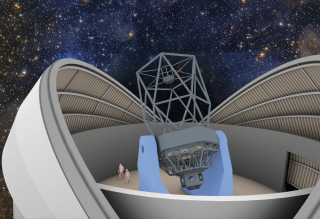Bibcode
Jermak, Helen E.; Barrera, Josué; Copley, David; Copperwheat, Chris M.; De Cos Juez, Javier; Gracia Rodriquez, Javier; Fernandez-Valdivia, J. J.; Garcí a Piñero, A.; Gutiérrez, Carlos M.; Harvey, Éamonn; Insausti, Maider; Knapen, Johan H.; Maudes Gutiérrez, Antonio; McGrath, Adrian M.; Oria, Asier; Ranjbar, Ali; Rebolo-López, Rafael; Steele, Iain A.; Torres, Miguel; Xu, Dong; Panyaphirawat, Thirasak; Aukkaravittayapun, Suparerk
Referencia bibliográfica
Society of Photo-Optical Instrumentation Engineers (SPIE) Conference Series
Fecha de publicación:
12
2020
Número de citas
1
Número de citas referidas
1
Descripción
The robotic 2-metre Liverpool Telescope (LT), located at Roque de los Muchachos, La Palma, has seen great success in its <15 year lifetime. In particular the facility thrives in time domain astronomy, responding rapidly to triggers from Swift and efficiently conducting a wide variety of science with its intelligent scheduler. The New Robotic Telescope (NRT) will be a 4-metre class, rapid response, autonomous telescope joining the Liverpool Telescope on La Palma in ~2025. The NRT will slew to targets and start observations within 30 seconds of receipt of a trigger, allowing us to observe faint and rapidly fading transient sources that no other optical facility can capture. The NRT will be the world's largest optical robotic telescope. Its novel, first-generation instrumentation suite will be designed to conduct spectroscopic, polarimetric and photometric observations driven by user requirements.
Proyectos relacionados

IACTEC Large Telescopes: New Robotic Telescope - NRT
El NRT (New Robotic Telescope) es un proyecto para diseñar y construir en un plazo de cinco años un telescopio de 4 metros que desde el ORM operará en una forma totalmente autónoma y robótica. Esta forma de operación lo convertirá en el telescopio robótico más grande del mundo.
Carlos Manuel
Gutiérrez de La Cruz